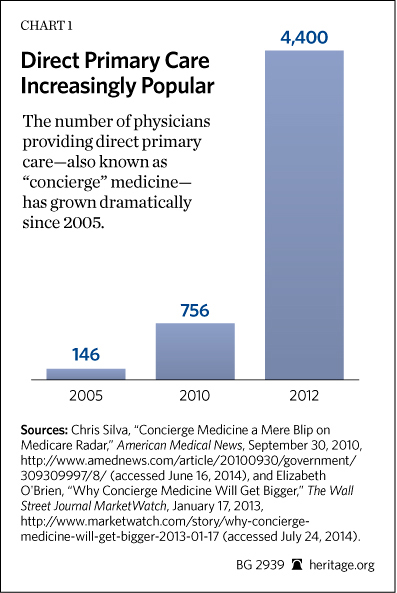Publisher's note: The author of this post is Katherine Restrepo, who is the Health and Human Services Policy Analyst for the John Locke Foundation.
This week marks the first annual
Healthcare Solutions Week – where public policy think tanks nationwide are raising awareness about how market-based principles can reduce health care costs while increasing quality and accessibility of care.
A massive government overhaul of our healthcare delivery system continues to unfold, and the nation is embarking upon uncharted territory. Providers are
fed up with reduced payments, spending more time wading through convoluted third party paperwork, and not being reimbursed in a timely fashion (Can someone say
NC Tracks?).
However, an increasing number of medical providers are taking on a business model that avoids Obamacare's additional unhealthy layers of regulations. By cutting out the middleman insurer, more doctors are delivering primary care services to patients in exchange for direct payment. Also known as "concierge care," direct primary care has been a niche market for years. While it once catered to affluent patients, the trend is now shifting toward offering affordable services to middle class and low-income patients.
Here in Raleigh, Dr. Brian Forrest's practice,
Access Healthcare, has piqued interest in the local news and on the national front. Featured in the
Weekly Standard,
The Wall Street Journal,
Forbes, and the
American Academy of Family Physicians, Forrest describes how he
offers patients varying primary care service packages for a monthly fee. Unlike traditional medical practices, Access Healthcare does not have to divert substantial amounts of revenue toward overhead and staff members responsible for medical coding, billing, and tracking down proper reimbursement from insurers like traditional practices. According to Forrest, such practices typically require an average of four full time employees per one physician to successfully take on these responsibilities.
Freed from these obligations and cost, more time can be spent with patients. And patients therefore can access preventative medical care at a much lower cost.
You may now be wondering whether direct primary care practices can survive under Obamacare, since it mandates that all individuals purchase health insurance or be faced with a tax. First, it should be noted that the tax amount isn't much of a
heavy hitter. Second, it turns out that language within the federal health law (section 10104) doesn't prevent direct primary care, so long as those patients purchase a "
wraparound" plan that includes services beyond basic preventative care, such as hospitalization. But, in order for insurers to offer these plans on the exchanges, the secretary of Health and Human Services must give ultimate approval.
The Heritage Foundation further
explains:
Lack of HHS criteria also hinders insurance companies from creating qualified wraparound plans to put on the exchanges. If insurance companies are uncertain of the criteria for direct primary care practices, they cannot know which benefits to supply in the wraparound plans.
Currently, only a handful of insurance companies have attempted to embrace direct primary care. Cigna and Michigan Employee Benefits Service (MEBS) have created plans for employers who choose to offer wraparound plans in conjunction with direct primary care.
Patients with catastrophic coverage who also access direct primary care can still see savings.
The Wall Street Journal weighs the pros of accessing direct primary care coupled with a high deductible policy:
Many of the new health plans have high deductibles that most members will never hit, meaning patients will still be paying thousands of dollars out-of-pocket anyway–possibly even more than what they'd spend on concierge medicine. People with deductibles of $5,000 or more should think about how many times a year they typically see the doctor and for what, keeping in mind that annual checkups are free under the ACA. If doctor visits typically cost $150 and the patient has six appointments a year, a concierge practice offering the same services for $40 or $50 a month might be cheaper.


























